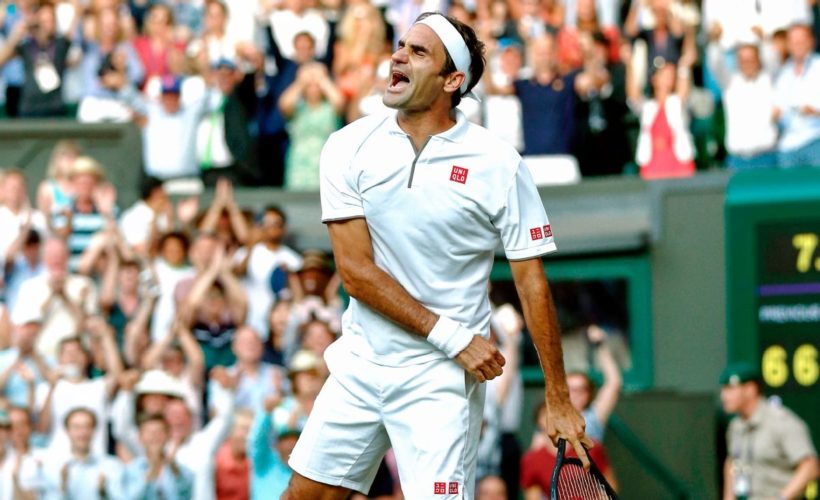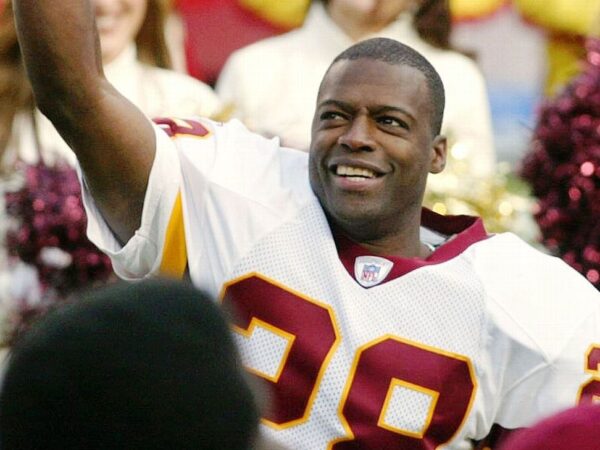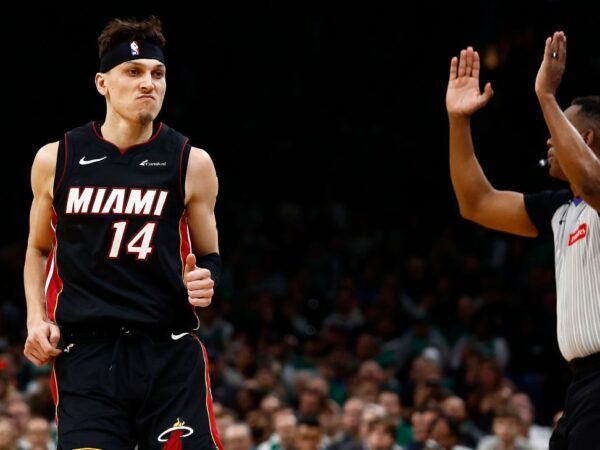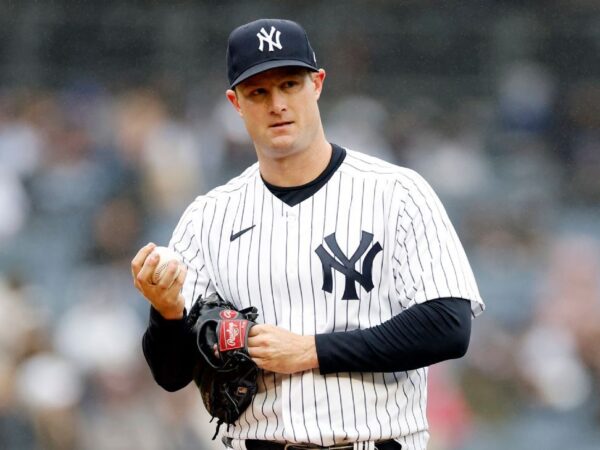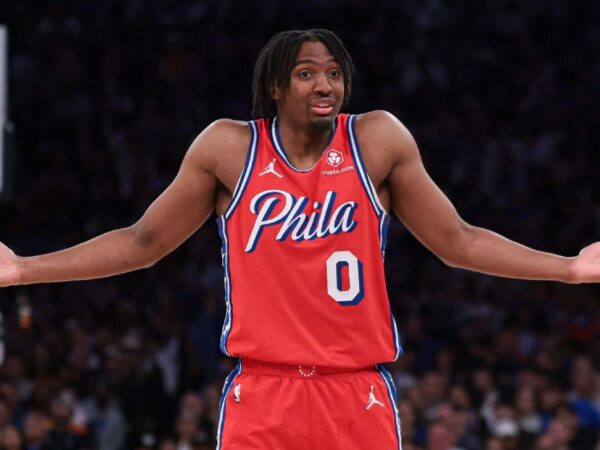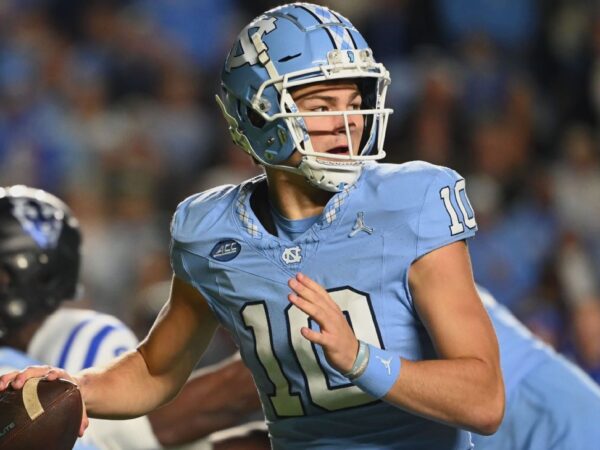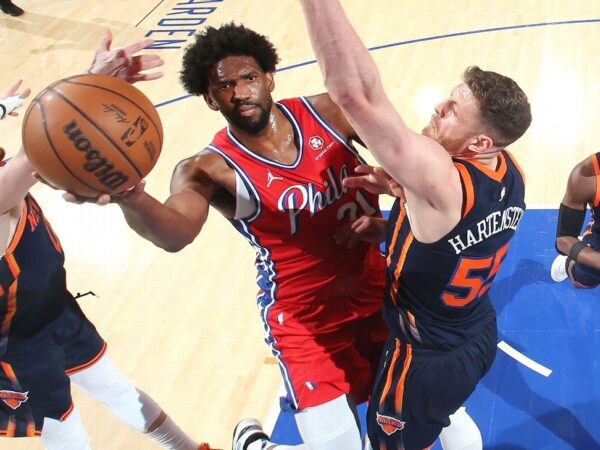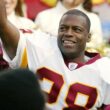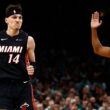LONDON — Eleven years ago, Roger Federer and Rafael Nadal set a new, impossibly high bar for Wimbledon matches, with Nadal winning that 2008 final in near darkness after five enervating sets before an amazed Centre Court crowd.
Federer and Nadal did not quite clear that tall bar in their four-set Wimbledon semifinal on Friday, but Federer, the winner by 7-6 (3), 1-6, 6-3, 6-4, won’t mind one bit. For 11 long years, he has had to live with the fact that while he is considered by most to be the GOAT, he was the loser in what many believe is the greatest match of all time. As far as redemption narratives go, this was close enough. Where does it rank on Federer’s own highlight reel?
“Obviously, extremely high,” Federer said afterward. “It’s always very, very cool to play against Rafa here, especially [as we] haven’t played in so long. It lived up to the hype. … It’s definitely, definitely going to go down as one of my favorite matches to look back at, again, because it’s Rafa, it’s at Wimbledon, the crowds were into it, great weather.”
Eleven years is a long time, and much has changed for and about both men.
Nadal, 33, has long retired those “Gilligan’s Island” clam diggers and sleeveless shirts. His dark hair is now visibly thinning on top, instead of framing his face in perspiration-soaked coils.
For his part, the 37-year-old Federer has stored that foppish, retro cardigan he wore here in 2008, fathered four children and abandoned his once-indispensable 90-square-inch racket in favor of one with a significantly larger (97-square-inch) head, the kind of racket that his 2008 self might have pooh-poohed as a racket for the elderly.
That final detail is significant, because Federer has admitted that the larger racket, adopted after at least one failed trial run in 2013, had been instrumental in his recent six-match winning streak over his career rival, a streak finally halted at last month’s French Open.
It wasn’t so long ago that Nadal ran roughshod over Federer’s one-handed backhand, knowing he could eventually break the shot down by peppering it with those high-bouncing, heavy forehand topspin drives. It’s different now. As Federer said in March 2017 after a straight-sets victory over Nadal at Indian Wells, “This year, I feel super comfortable with the racket. And I think I have gained confidence stepping into [the backhand].”
Federer was almost 32 years old and already a 17-time Grand Slam champion when he decided to embrace the larger racket. He was mindful that his friend and onetime role model Pete Sampras, who retired at 31 in 2002, regretted never giving one of the new, larger rackets a chance to add a year or two to his career.
Federer’s decision is one of many that help explain his longevity, as well as the level of tennis that he has sustained. His willingness to ignore his success and dare to reinvent himself goes hand in hand with his long view of his career.
“I wanted to play for a long time,” Federer said earlier in this tournament. “I felt that I took that decision a long, long time ago, not just three years ago, that hopefully I can still be on tour. This was basically taken back in 2004 when I became world No. 1.”
But Federer himself might be shocked at what he still is accomplishing at age 37 — or he might be, if he ever took time out from bamboozling his rivals. Among them, Nadal is his sentimental favorite, as well as his career-measuring yardstick. Theirs is a rivalry that has been distilled down to its pure essence.
The men were asked Wednesday to talk about forehands and backhands, strengths and weaknesses. Both of them shrugged and took a pass: “I don’t know. It doesn’t matter anyway. Who cares?” Federer said. “It’s about how has he played so far, how have I played so far. I hope it goes my way.”
Still, 11 years is a long time, and the changes in the two men were evident in the match. The exuberance and explosive desire of youth has been replaced by patience, stoicism and an opportunistic and watchful focus.
Perhaps because he lost that historic match to Nadal, Federer seemed especially eager to shut out all distractions. He played Friday’s entire match with his head down, communing only with himself, when the ball wasn’t in play. He walked gingerly from side to side on the court. He waited patiently between points, his entire body slack, oblivious to Nadal taking his time, going through his elaborate rituals before allowing play to continue.
“It’s always very, very cool to play against Rafa here, especially [as we] haven’t played in so long. It lived up to the hype.”
Roger Federer
The greatest surprise in the match was Federer’s continued ability to stay in the rallies when they were throwing haymakers at each other, the kind of warp-speed rallies that Nadal always has specialized in winning. Those rallies might not have occurred in the most crucial moment of the match, and there weren’t a great number of them. But the way Federer stood in and exchanged blows with Nadal gave him confidence.
“Winning long rallies is always a nice feeling,” Federer said. “They were also played on a very high level in terms of speed and power and spin and everything. Almost every shot we’re trying to win the point. … I think it is important that I can win those, as well. I wonder if it took something out of him.”
And it appeared to discourage Nadal.
Nadal was unable to execute a reliable game plan. But for that second-set lapse by Federer, Nadal was unable to break down the backhand. Federer’s quickness and fierce serve returning took care of the rest.
“[He plays] very inside the court. He’s not giving you time to open the court,” Nadal said. “When I was hitting the ball with the forehand, [and] especially with the backhand, I was not able to open the court as [on] the other days. You will not make him miss for speed of the ball. You need to make him miss because you put him out of position.”
Federer probably will have to bring the same measure of determination and the same physical skill set to Sunday’s final against Novak Djokovic. The defending champion looked strong in his own semifinal win over Roberto Bautista Agut, even if that match was, by comparison, a ho-hum affair.
1:35
Roger Federer looks ahead to Sunday’s Wimbledon final against reigning champion Novak Djokovic.
Federer’s win on Friday was of modest duration (3 hours, 2 minutes) — as compared to the 4 hours, 48 minutes Federer and Nadal consumed in 2008 — so theoretically he should have plenty left in the tank. But this was an extremely intense, draining and deeply satisfying experience for Federer. Can he do it all over on Sunday?
“I don’t have much energy to go train very much right now,” Federer said jokingly, when asked how he would prepare for the ultimate test. “I don’t think there’s much I need to do in terms of practice. This is like a school: The day of the test, you’re not going to read I don’t know how many books that day. You don’t have the time anyhow. It’s quite clear the work was done way before.”
Federer likely will have to labor just as hard — and play an equally leakproof game — if he hopes to neutralize Djokovic in the final. The Serbian champ is trying to equal Bjorn Borg’s five Wimbledon titles. But Djokovic also is hoping to move closer to the eight-time Wimbledon and 20-time Grand Slam champion Federer in the record books.
“We all know how good [Federer] is anywhere, but especially here,” Djokovic said after his own victory. “This surface complements his game very much. He loves to play very fast.”
Djokovic pointed out how Federer likes to “take time away” from his opponents and how he doesn’t often give opponents the “same looks.”
“He just rushes you to everything,” Djokovic added. “So, for players like Nadal or myself that like to have a little more time, it’s a constant pressure that you have to deal with. I’ve played with Roger in some epic finals here a couple years in a row, so I know what to expect.”
There are no surprises among these three men. Their trivalry has been long and rich, with chapters still unwritten. All three men are in their 30s now (Djokovic is 32), so there’s no telling how long this can all go on. Nadal knows the window is closing.
But then, what might he — or Federer — have said in 2008, if they were told after that epic final that they would have to wait 11 years to meet again under similar circumstances?
“Age kicks in,” Federer said, looking ahead to the final. “I know it’s not over yet. There’s no point to start partying tonight or get too emotional, too happy about it, even though I am extremely happy. I think I can with experience really separate the two. If it was the end of the tournament, it would be very different right now. I’d be speaking very different, feeling very different. There is, unfortunately or fortunately, one more.”
And a big one it is. Whether it will come close to being as big as the 2008 final for the man who was on the losing end of that one remains to be seen.
Source:ESPN

